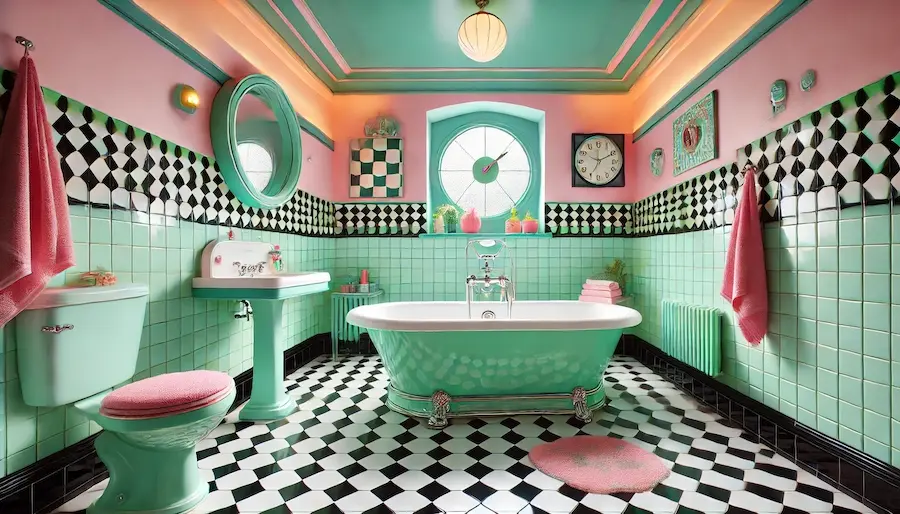Retro bathrooms evoke the charm and character of past decades, blending vintage aesthetics with modern functionality. This article explores the history, key features, applications, and considerations for incorporating a retro bathroom into your home.
Introduction to Retro Bathrooms
A retro bathroom design draws inspiration from styles prevalent between the 1920s and 1970s. Characterized by bold colors, geometric patterns, and classic fixtures, these bathrooms offer a nostalgic ambiance that pays homage to design trends of yesteryears.
History and Origins of Retro Bathrooms
The evolution of bathroom design reflects broader societal changes. In the early 20th century, bathrooms transitioned from purely functional spaces to areas showcasing style and luxury. The 1920s and 1930s introduced Art Deco influences, featuring bold geometric patterns and lavish materials. By the 1950s and 1960s, mid-century modern design embraced pastel colors, innovative fixtures, and a focus on convenience, resulting in vibrant and functional bathroom spaces.
Key Features of Retro Bathrooms
Retro bathrooms are distinguished by several hallmark features:
- Color Schemes: Utilization of pastel hues like mint green, baby blue, and pink, as well as bold combinations such as black and white checkerboard patterns.
- Fixtures: Inclusion of pedestal sinks, clawfoot tubs, and vintage-style faucets in finishes like chrome or brass.
- Tiles: Application of subway tiles, hexagonal tiles, and penny tiles to create distinctive patterns and textures.
- Accessories: Incorporation of antique mirrors, vintage lighting fixtures, and period-appropriate hardware to enhance authenticity.
Applications of Retro Bathrooms
Retro bathroom designs can be adapted to various settings:
- Residential Homes: Homeowners may choose a retro design to add character and nostalgia to their bathrooms.
- Boutique Hotels: Establishments aiming for a unique guest experience might incorporate retro bathrooms to evoke a sense of nostalgia and charm.
- Historic Renovations: Restoring older properties often involves recreating period-accurate bathrooms to maintain historical integrity.
Considerations When Choosing Retro Bathrooms
When planning a retro bathroom, consider the following:
- Authenticity vs. Modern Needs: Striking a balance between authentic vintage aesthetics and contemporary functionality is crucial.
- Maintenance: Vintage fixtures and tiles may require more upkeep; ensure materials are durable and consider modern reproductions for easier maintenance.
- Space Constraints: Some retro fixtures, like clawfoot tubs, require ample space; assess your bathroom’s dimensions before selection.
- Budget: Authentic vintage pieces can be costly; explore reproductions or second-hand options to manage expenses.
Conclusion
Incorporating a retro bathroom design allows for a unique blend of nostalgia and style, creating a space that reflects the charm of past eras while accommodating modern conveniences. By understanding the history, key features, and practical considerations, you can create a retro bathroom that is both functional and timeless.
